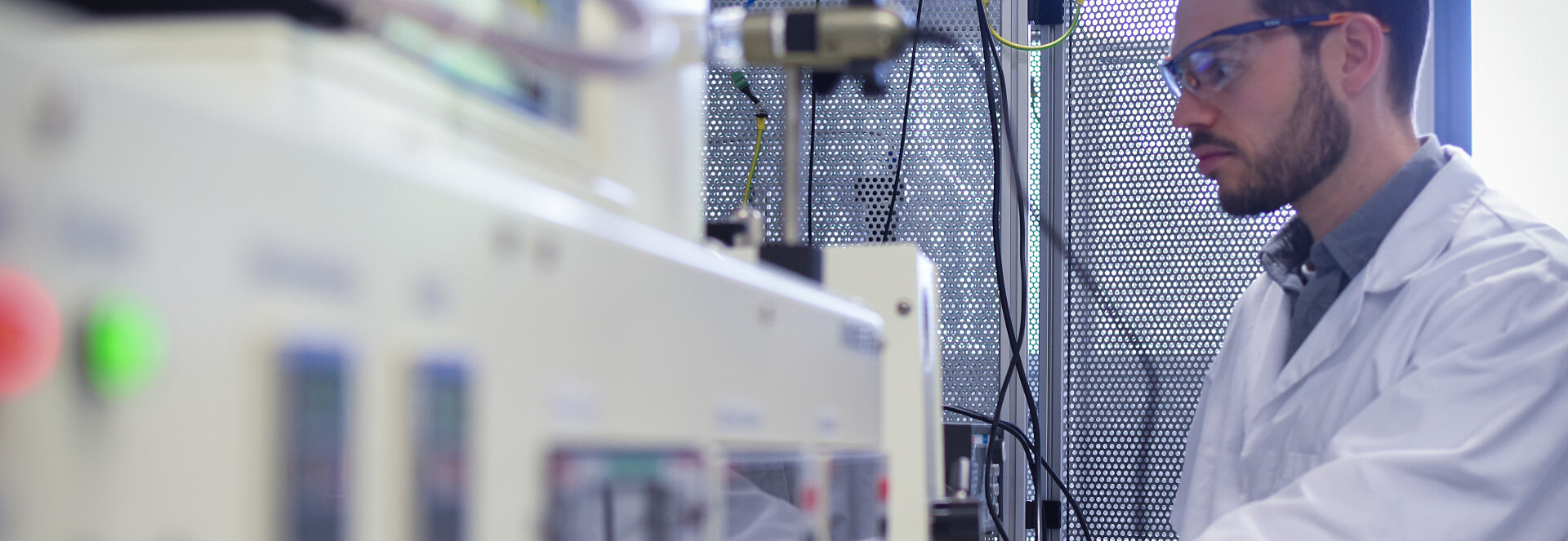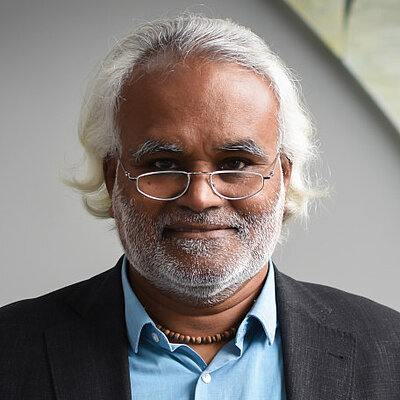Sustainable Energy
The sun provides more energy in one hour than humanity consumes in an entire year. But how can we harness this vast, clean power source efficiently and affordably to drive forward the energy transition, meeting the need for humanity to reduce its dependence on fossil fuels?
The Bavarian research network Solar Technologies go Hybrid (SolTech) is tackling this question with a unique interdisciplinary approach that brings together expertise from five leading universities in Bavaria: Friedrich-Alexander-Universität Erlangen-Nürnberg (FAU), Ludwig-Maximilians-Universität Munich (LMU), Technical University of Munich (TUM), the University of Bayreuth (UBT), and the Julius-Maximilians-Universität Würzburg (JMU).
Founded in 2012 and funded by the Bavarian State Ministry of Science and the Arts, SolTech aims to develop next-generation materials and technologies for converting solar energy into electricity and solar fuels—energy stored in chemical form, such as green hydrogen. Originally focused on photovoltaics, the network has grown to include more than 45 research groups, now exploring the entire value chain of solar energy—from basic science to applied prototype devices. The interuniversity research within this network provides long-term solutions and platforms for a carbon-neutral future energy scenario.
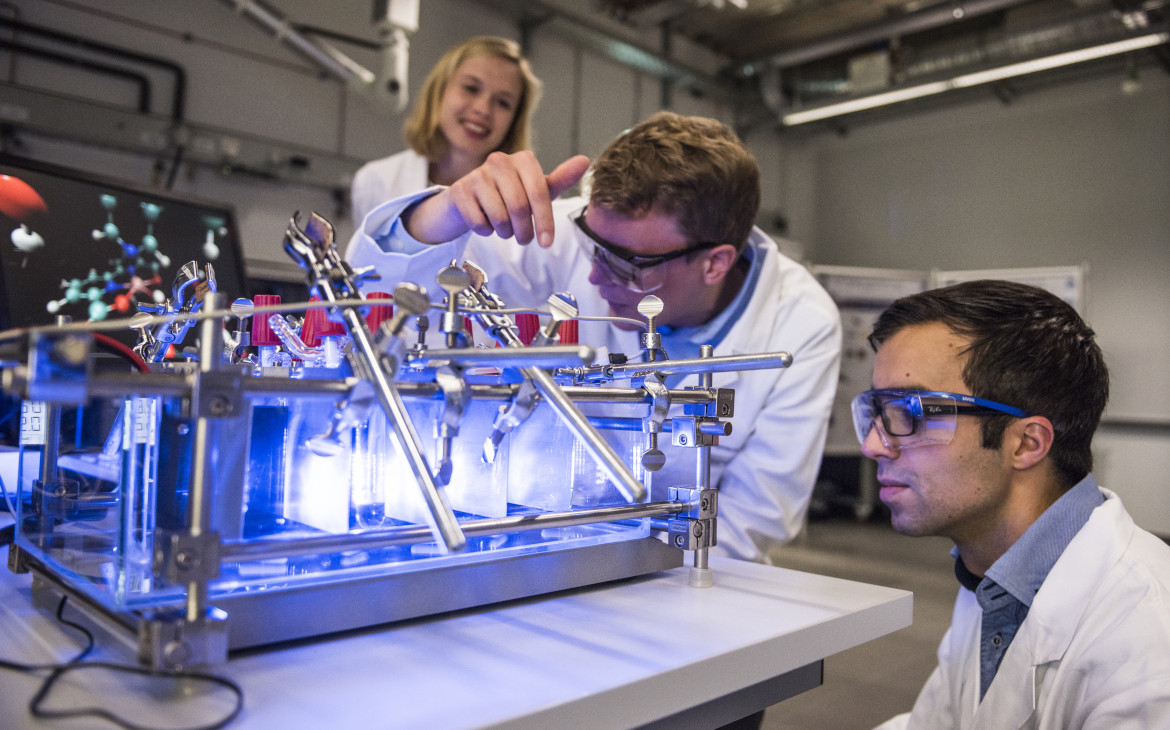
Green Hydrogen and Beyond: Photocatalytic Water Splitting
One of SolTech’s most exciting research directions is photocatalytic water splitting: using sunlight to split water molecules and produce green hydrogen. As hydrogen is an emission-free fuel with water as the only byproduct of its combustion, it can serve as a clean fuel. Possible applications include everything from industrial processes to transportation, helping to reduce dependence on fossil fuels. Another promising avenue is CO₂ reduction. This process transforms a greenhouse gas into valuable chemicals and fuels using sunlight and earth-abundant materials.
However, this work is more than theoretical. SolTech teams are collaborating closely with industry partners to transfer lab discoveries into scalable and disruptive technologies. Students and young researchers who have been engaged in SolTech activities are highly sought after by leading companies in tomorrow’s energy sector.
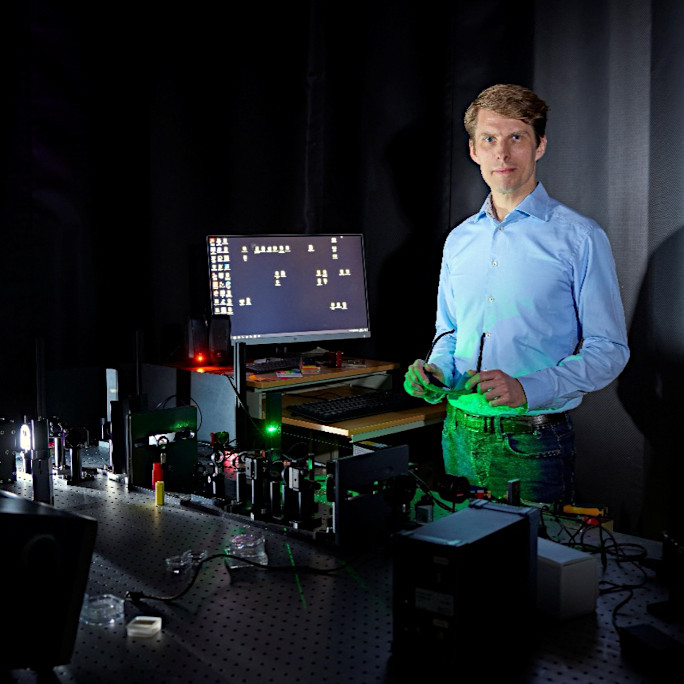
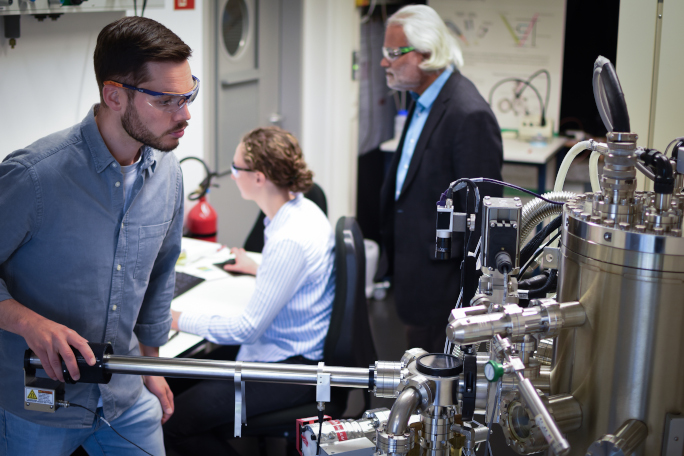
A Unique Collaboration
SolTech brings together 48 research groups and leading scientists from five Bavarian universities. Each partner contributes its own area of expertise:
- FAU Erlangen-Nürnberg: carbon-rich compounds
- LMU Munich: renewable energy materials
- TUM: hybrid systems with nanomaterials
- University of Bayreuth: polymeric materials
- JMU Würzburg: supramolecular nanosystems
Together, they are exploring hybrid systems that combine organic dyes with inorganic semiconductors to improve solar energy capture and conversion. These approaches open new design possibilities for highly efficient and sustainable solar technologies. Using a close interface with industries, the knowledge gained is secured and converted into viable and ground-breaking technologies.
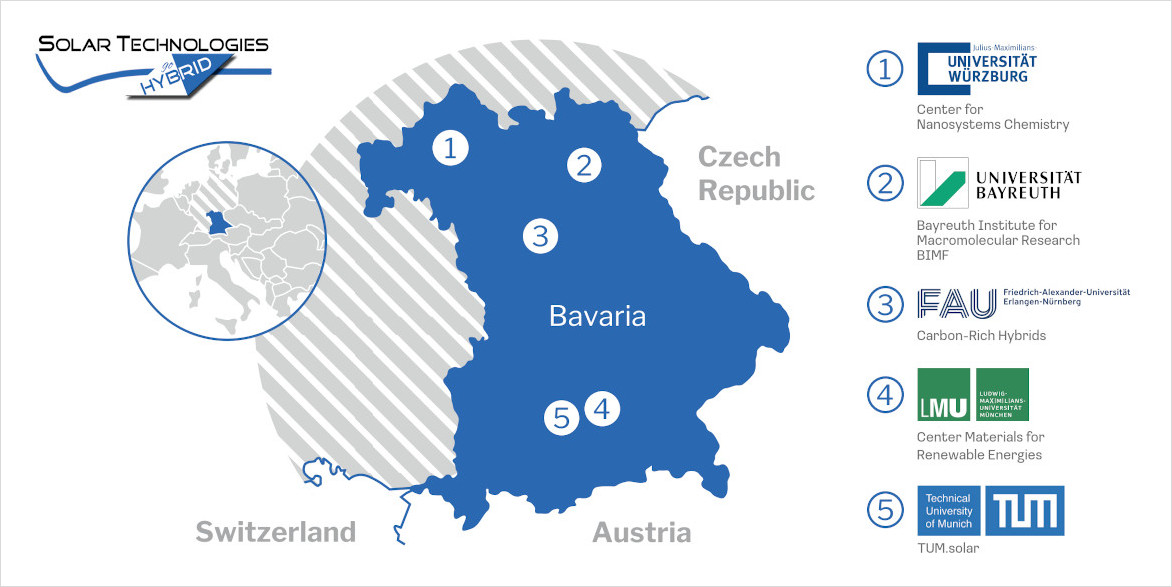
Connecting Bavaria and the World
SolTech maintains strong international ties, working closely with renowned research consortia around the globe to ensure its work remains at the forefront of renewable energy innovation. In the United States, key partners include the Argonne-Northwestern Solar Energy Research Center (ANSER Center), which focuses on developing efficient and economically viable technologies for solar fuels and electricity, and the Joint Center for Artificial Photosynthesis (JCAP), an Energy Innovation Hub dedicated to creating cost-effective methods for producing fuels from only sunlight, water, and carbon dioxide.
Across Europe, SolTech collaborates with the Netherlands Energy Research Alliance (NERA). This is a world-leading institute in the fields of natural resources, agriculture, food systems, and biobased energy solutions. In addition, SolTech has joined forces with the Swedish Consortium for Artificial Photosynthesis (CAP). Further global engagement includes a partnership with Australia’s Victorian Organic Solar Cell Consortium (VICOSC), known for its pioneering work in developing large-scale printing technologies for solar cells.
We are not only developing new materials and technologies—we are training a new generation of scientists who think across disciplines and institutions. That’s essential if we want to solve the global energy challenge.Prof. Dr. Mukundan Thelakkat, Prof. Dr. Mukundan Thelakkat, Head of the Applied Functional Polymers Research Group at the University of Bayreuth and Coordinator of SolTech
Opportunities for Young Researchers
SolTech offers a rich environment for PhD students and postdocs interested in making a difference through science. Within the SolTech network, a wide variety of new research topics and insights into the chemistry and physics of photoactive materials and devices are fully integrated into teaching to equip PhD students with cutting-edge research expertise that will enable them to shape the energy scenario of the future. Research topics encompass the synthesis of organic, inorganic and hybrid energy materials up to theoretical and experimental physics, including AI-assisted material screening and fundamental spectroscopic studies of underlying physical processes as well as testing in small-scale prototype devices. Talented graduates in chemistry or physics are encouraged to reach out to the individual principal investigators at the universities for potential opportunities.
SolTech at a Glance
Solar Technologies go Hybrid (SolTech) is an interdisciplinary research network of five Bavarian Universities. Initiated and funded by the government of Bavaria, it explores innovative concepts for the conversion of solar energy into electricity (photovoltaics) and solar fuels (energy stored in chemicals). The SolTech network is embedded in the international renewable energy landscape.
Key Labs:
- Bayreuth Institute for Macromolecular Research (BIMF), University of Bayreuth
- Center for Nanosystems Chemistry, JMU Würzburg
- Carbon-Rich Hybrids, FAU Erlangen-Nürnberg
- TUM.solar, TUM
- Center Materials for Renewable Energies, LMU Munich
International collaborations:
- Argonne-Northwestern Solar Energy Research Center (ANSER Center, USA)
- Joint Center for Artificial Photosynthesis (JCAP, USA)
- Netherlands Energy Research Alliance (NERA, Netherlands)
- Consortium for Artificial Photosynthesis (CAP, Sweden)
- Victorian Organic Solar Cell Consortium (VICOSC, Australia)



